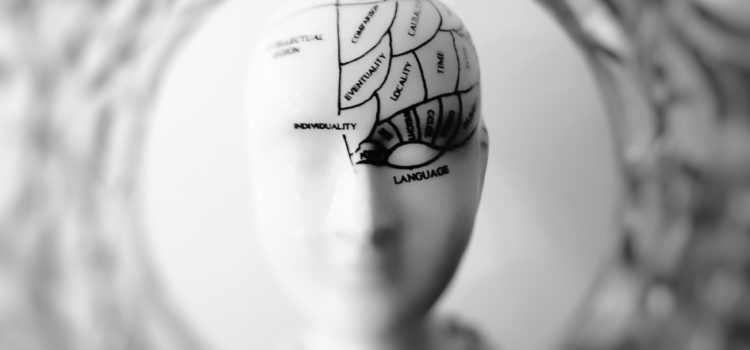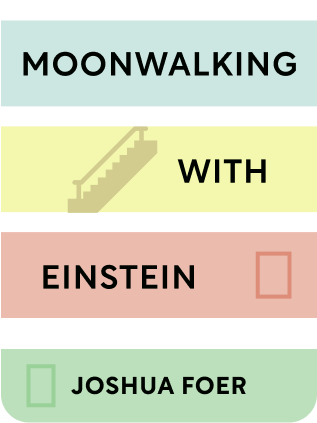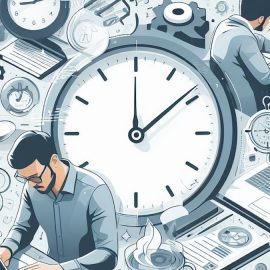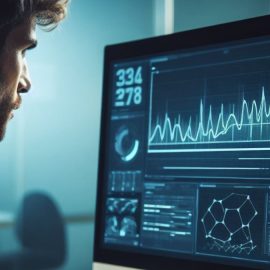

This article is an excerpt from the Shortform summary of "Moonwalking With Einstein" by Joshua Foer. Shortform has the world's best summaries of books you should be reading.
Like this article? Sign up for a free trial here .
What is the science of memory? How does it work, and why do you have a memory in the first place?
The science of memory is dependent on many different parts of our brain, all working together. Memory works to connect these different parts.
Keep reading to find out the science of memory and why you remember the things you do.
The Science of Memory
So what is the science of memory? Our brains are made up of a web of neurons, and physiologically, a memory is an arrangement of connections between neurons. Whenever you think or encounter a sensation, this alters the connections. For example, thinking of the word “chocolate” might also make you think about the taste of sweetness, the color brown, and Valentine’s Day.
However, science doesn’t know yet how cells actually “contain” a memory. No one has seen a memory. Scientists have a good idea of what happens between and inside brain cells, and they can look at which parts of the brain light up when people are thinking, but they don’t know that much about thought and memory themselves. So even though we know something about the science of memory, we can’t possibly know it all.
What science does know is that we only consciously remember things when cued. Because our brains are a web rather than a straight pathway, we can’t search our brains in any linear way. We remember something when we think about something else that’s connected to it in the web of associations. For example, if you met someone whose name you’ve forgotten, you might have to think about what the person did for a living or where you met them in order to cue the memory you’re actually looking for.
Additionally, the science of memory says that “memory” isn’t a single entity—it’s many different systems and facets. Some people have good memories for names and faces, while others are better at numbers.
Parts of the Brain
The study of the science of memory necessitates the study of the brain. Memories are created in, stored in, and affected by different parts of the brain:
- Neocortex. This is the brain’s wrinkly-looking outer layer. It stores memories.
- Hippocampus. This is involved in converting our perceptions into long-term memories. The right posterior section is involved in spatial navigation, which, as we’ll see, is an important aspect of memory.
- Medial temporal lobe. This contains the hippocampus and is involved with long-term memory.
- Basil ganglia. This is involved in learning habits.
- Cerebellum. This is involved in learning motor skills.
- Frontal and parietal cortices. These are involved with recalling long-term memories.
When we use our brains, they physically change—we can form new neurons and rearrange connections. This is known as neuroplasticity. For example, neuroscientist Eleanor Maguire studied the brains of London cabbies-in-training. She found that their right posterior hippocampi (responsible for spatial navigation) were 7% larger than the average person’s because they spent so much time memorizing the layout of the city.
Types of Memory
There are several different classifications and types of memory, some related to specific parts of the brain.
Declarative vs. Nondeclartive Memories
There are two different types of individual memories:
- Declarative. Declarative memories are conscious memories—things you know you know, such as what your name is. The hippocampus is involved in forming these types of memories. They’re further divided into two categories:
- Episodic. Episodic memories are memories of life experiences and are anchored in a when and where. For example, you remember that you ate spaghetti for dinner yesterday.
- Semantic. Semantic memories are memories of concepts and facts. They aren’t associated with a place or time. For example, you remember that dinner is the third meal of the day.
- Episodic and semantic memories both require the hippocampus and medial temporal lobes, but they also depend on different parts of the brain and different neural pathways.
- Nondeclarative. Nondeclarative memories are unconscious memories. They’re formed using the neocortex, cerebellum, and basal ganglia. These memories have a lot to do with what people think of as our sense of self—how we think, who we are.
- For example, it takes a lot of brainpower to ride a bike—you have to balance, avoid objects, and so on, but you don’t have to consciously think about any of this after you’ve learned.
Working vs. Long-Term Memory
The brain uses at least two different systems to store memories:
- Working memory. Your working memory keeps track of whatever’s currently the focus of your consciousness. It acts as a filter between your experiences of the world and your memory of it. Only if the brain deems something relevant will it be stored more permanently. Your working memory can only hold on to five to nine different things at once.
- Think of your working memory like the CPU of your computer. It stores whatever your computer is working on at the moment, and only for as long as you need it.
- For example, if there’s a pigeon on the sidewalk, you only need to remember its existence long enough to walk around it.
- Long-term memory. The long-term memory stores things you need to remember for longer than a few moments.
- Think of your long-term memory like the hard drive of your computer. It stores things for a much longer period of time, up to a lifetime.
- For example, your birthday is something you’re going to need to remember every year, so it’s stored in long-term memory.
Scientists think that sleep is important for consolidating our memories. For example, in experiments with rats, scientists look at rats’ brains while they’re awake learning to run a maze and then while they’re asleep. Asleep, their neurons are firing in the same patterns they did while learning the maze. Dreams could be part of the process of creating long-term memories.
Internal vs. External Memories
The science of memory says that memory exists outside of our brains, too. There are two different ways to store memories:
- Internally. Internal memories consist of the information individuals keep in their heads.
- Externally. External memories consist of memory aids such as books, calendars, phone books, and so on. External memory transcends our own lifetimes and allows us to share information in our memories with others. In modern times, people tend to rely on external memories rather than internal ones.
- An extreme version of an external memory is called lifelogging, in which you externally keep track of everything that happens to you. Lifelogger Gordon Bell wears a camera around his neck, records all his speech, and scans every piece of paper he reads. He stores the information on a hard drive and adds about a gigabyte per month.
An external memory can’t yet completely replace an internal one. Gordon Bell can’t search for anything in his external memory without a cue—a search term—from his internal memory. For example, one day, Bell wanted to find a website he’d visited. The only thing he could remember was that at the time he’d been on the website, he was also talking to a realtor on the phone. In his external memory, he could look up the time of the phone call and then look up what else he was doing at the time.
In the future, it may be possible to seamlessly connect our internal and external memories. Neuroprosthetics that allow direct communication between the brain and a machine already exist. For example, there’s a type of cochlear implant that transforms sound waves into electrical impulses. These impulses are then sent to the brain stem. This allows deaf people to hear.
The science of memory is fascinating, and there’s still a lot to learn. Just like out memories themselves, the science behind it is constantly growing.

———End of Preview———
Like what you just read? Read the rest of the world's best summary of Joshua Foer's "Moonwalking With Einstein" at Shortform .
Here's what you'll find in our full Moonwalking With Einstein summary :
- The memory techniques that took the author from novice to US memory champion in one year
- The 6 key types of memory we use everyday
- Why memory isn't just genetic, and how you can improve your memory with the right techniques






